When it comes to keeping your home and loved ones safe, some guard dog breeds seem to have been born for the job. These dogs combine sharp intelligence, strong protective instincts, and a natural ability to deter intruders with just their presence. They’re not only capable of defending property, but—when given proper training and early socialization—they can also be gentle and affectionate companions.
In fact, according to canine intelligence expert Stanley Coren, dogs’ mental abilities are comparable to those of a human child aged 2 to 2.5 years—meaning the best guard dogs can quickly learn routines, problem-solve, and adapt to changing situations.
The most protective dog breeds aren’t just about muscle; they’re often among the smartest breeds, able to assess situations, respond to commands, and stay alert without unnecessary aggression.
And while not all dogs are cut out for protection work, the best guard dogs have a deep sense of loyalty and thrive when they can look out for their family members. In this blog, we’ll explore some of the smartest guard dog breeds you can own.
Smartest Guard Dog Breeds You Can Own
1. Cane Corso
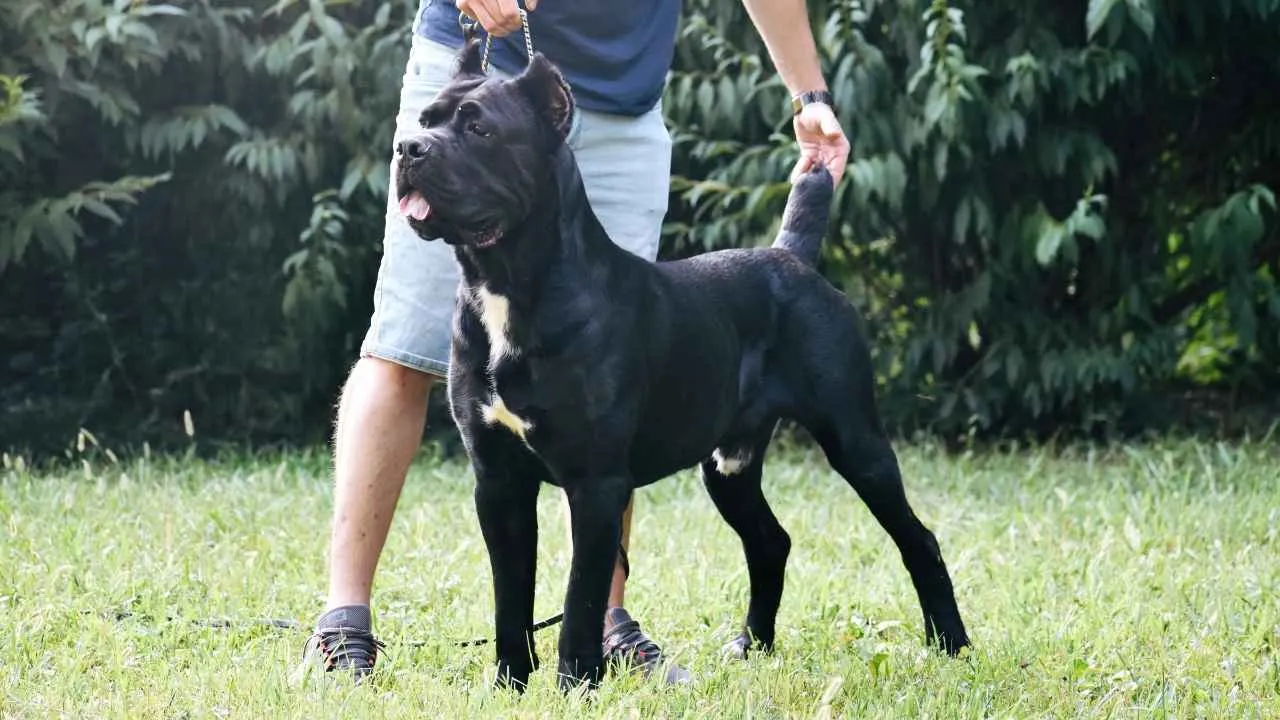
The Cane Corso is a large, powerful working dog with deep roots in ancient Rome. Descended from Molossian war dogs, it was originally bred in Italy for guarding farms, hunting large game, and protecting livestock. Britannica mentions that its Latin name translates to “bodyguard dog” or “guardian of the courtyard,” reflecting its strong protective nature.
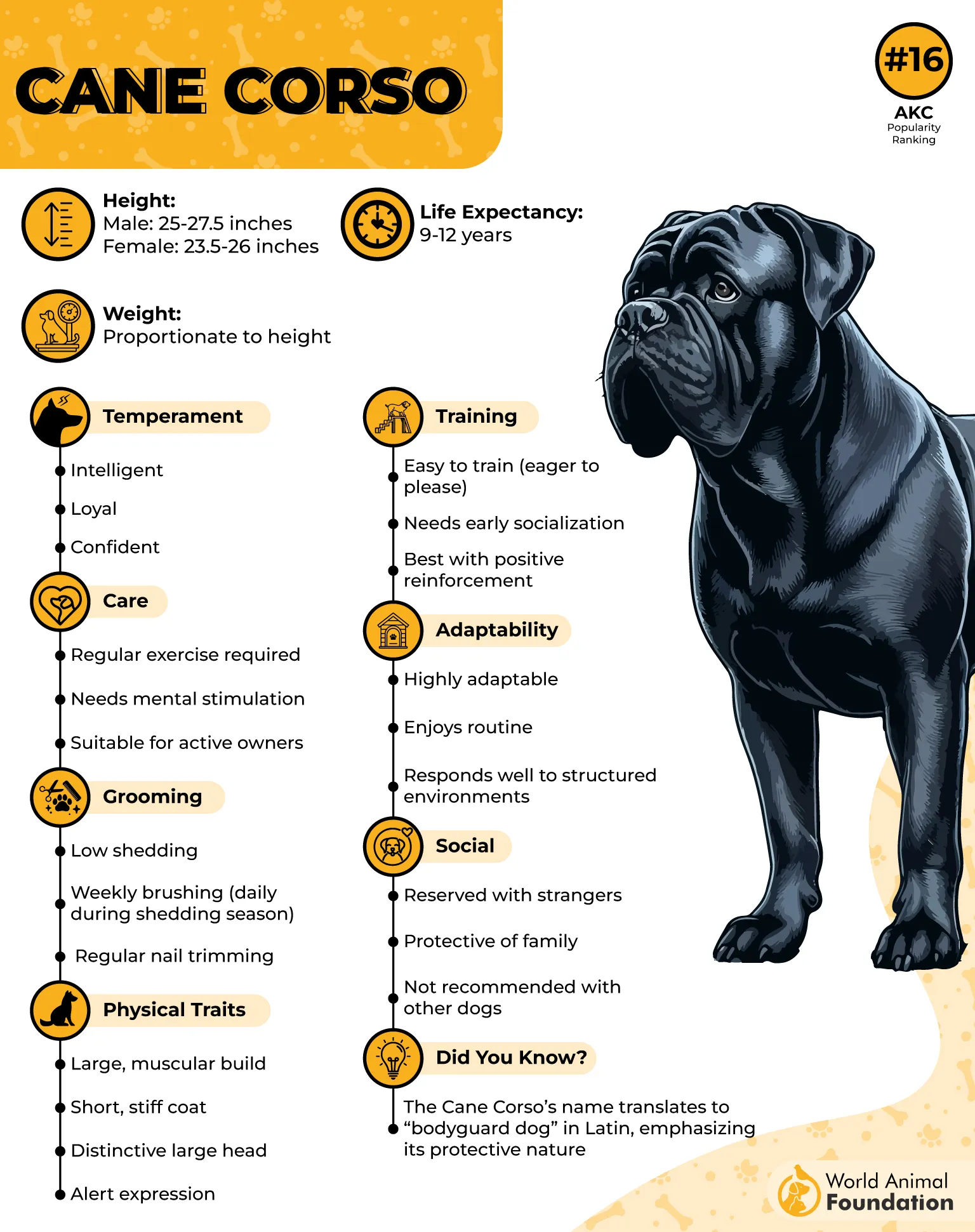
This breed is known for intelligence and independence. While not always the most obedient in a traditional sense, Cane Corsi are quick learners and skilled problem-solvers. They often make their own decisions, which can be an asset in real-life protection situations. With consistent training and early socialization, they become reliable and adaptable companions.
Physically, they are imposing, standing 23 to 28 inches tall and weighing up to 110 pounds. Their muscular build, broad head, and short, stiff coat add to their commanding presence. Loyal and watchful, they are naturally protective dogs that excel at keeping their families safe while remaining affectionate with those they trust.
2. American Bulldog

The American Bulldog is a strong, athletic working dog originally bred for guarding farms and driving cattle. Loyal and protective, it bonds closely with its family and will defend them if needed. While friendly with those it knows, it can be suspicious of strangers, so early socialization is essential.
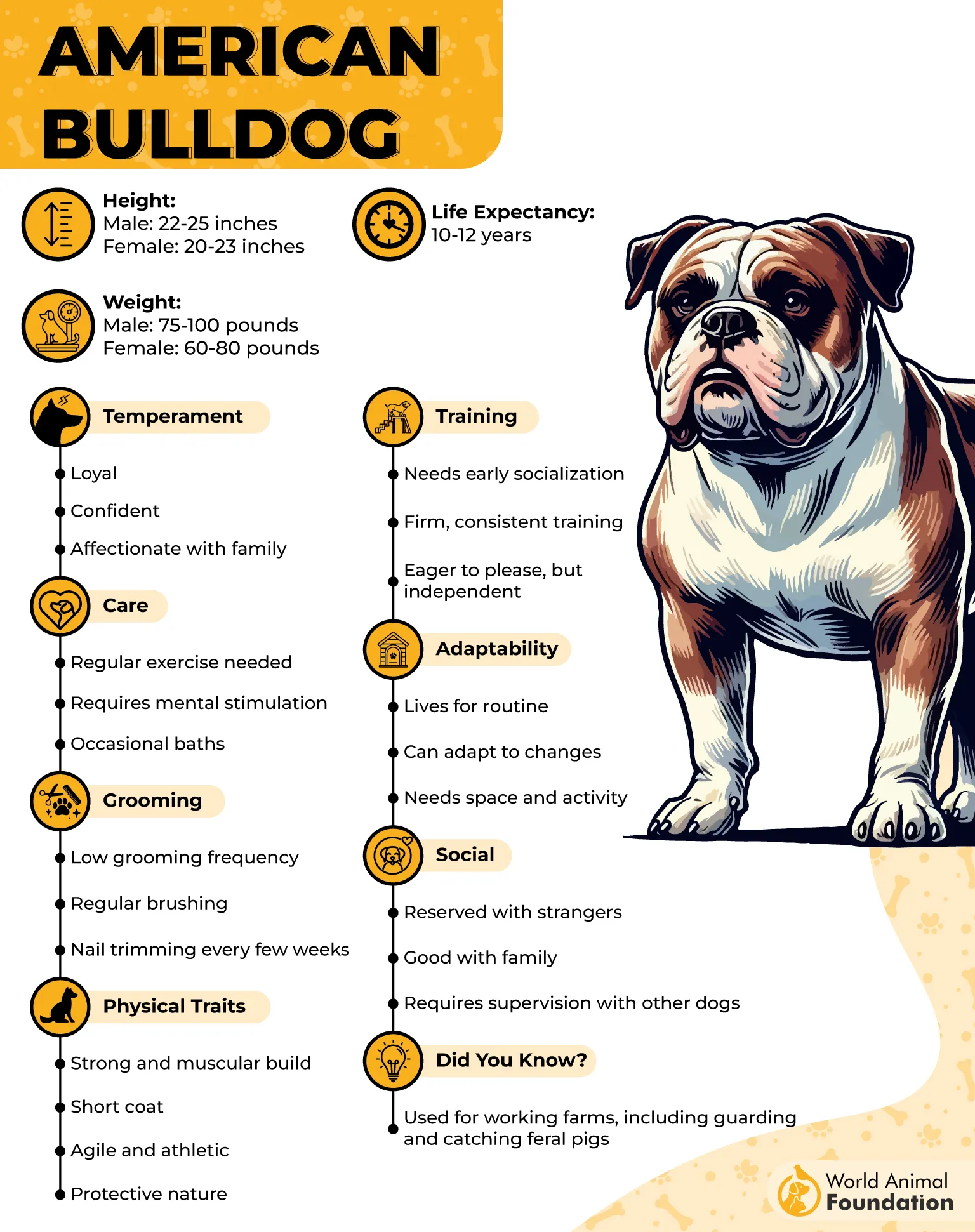
This breed is energetic and thrives on daily physical and mental exercise. Without enough activity, it can become bored and develop unwanted behaviors. Firm, consistent obedience training is important, as American Bulldogs are intelligent but can be strong-willed. They are best suited for experienced dog owners who can provide structure and leadership.
American Bulldogs may not always get along with other pets, especially same-sex dogs, unless raised with proper socialization. Their short coat is easy to care for, though their skin may need special attention. In the right hands, they are affectionate, devoted companions—both loving family dogs and capable guard dogs.
3. German Shepherd
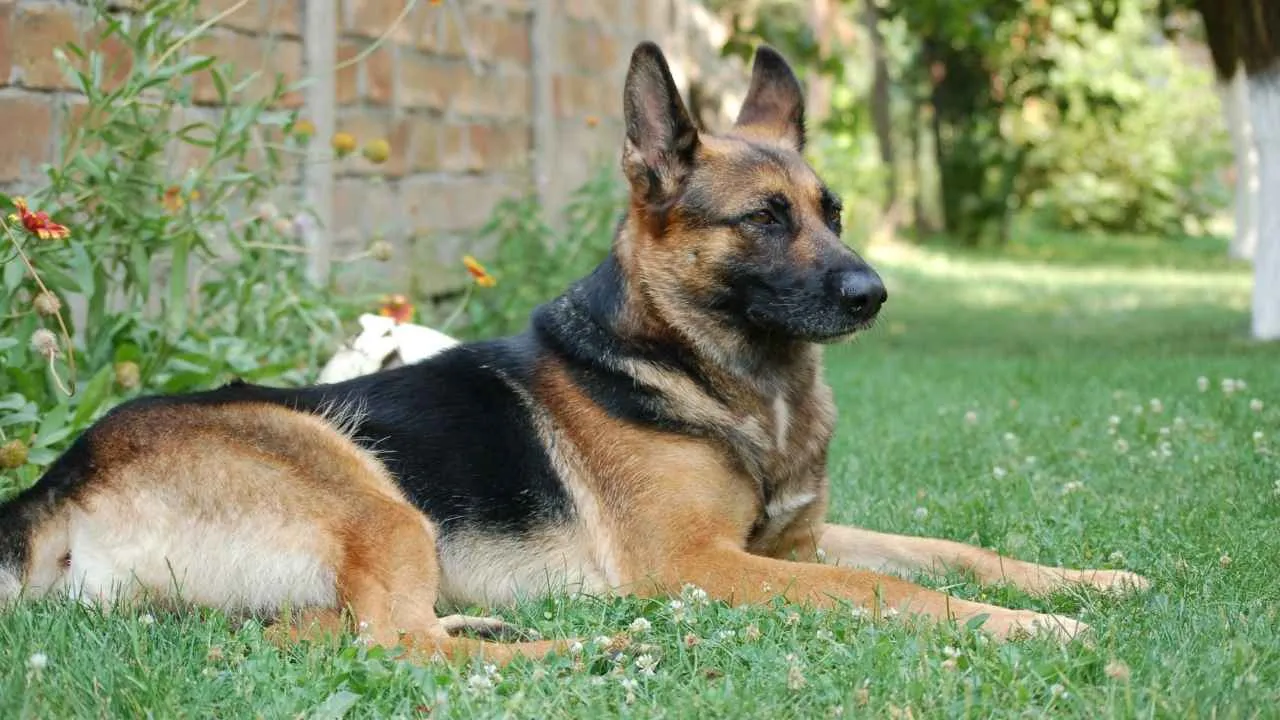
German Shepherds are among the most respected protective dog breeds, valued for their loyalty, intelligence, and strong protective instincts.
Originally bred to guard and herd livestock, they now excel in demanding roles such as police work, military service, and even as service dogs for people with disabilities. Their adaptability and focus make them some of the best guard dogs for both professional and family settings.

As guard dogs, they are naturally watchful and quick to respond to potential threats. Their power and confidence make them effective protection dogs, but they need early training and clear commands to know when to act and when to stand down.
Obedience training and proper socialization from a young age help ensure they’re both reliable protectors and well-mannered companions.
German Shepherd protection dogs are also loving family pets, often forming strong bonds with children and joining in active play. They thrive when given a job to do, making them one of the most protective dog breeds for households that can meet their exercise and mental stimulation needs.
4. Belgian Malinois
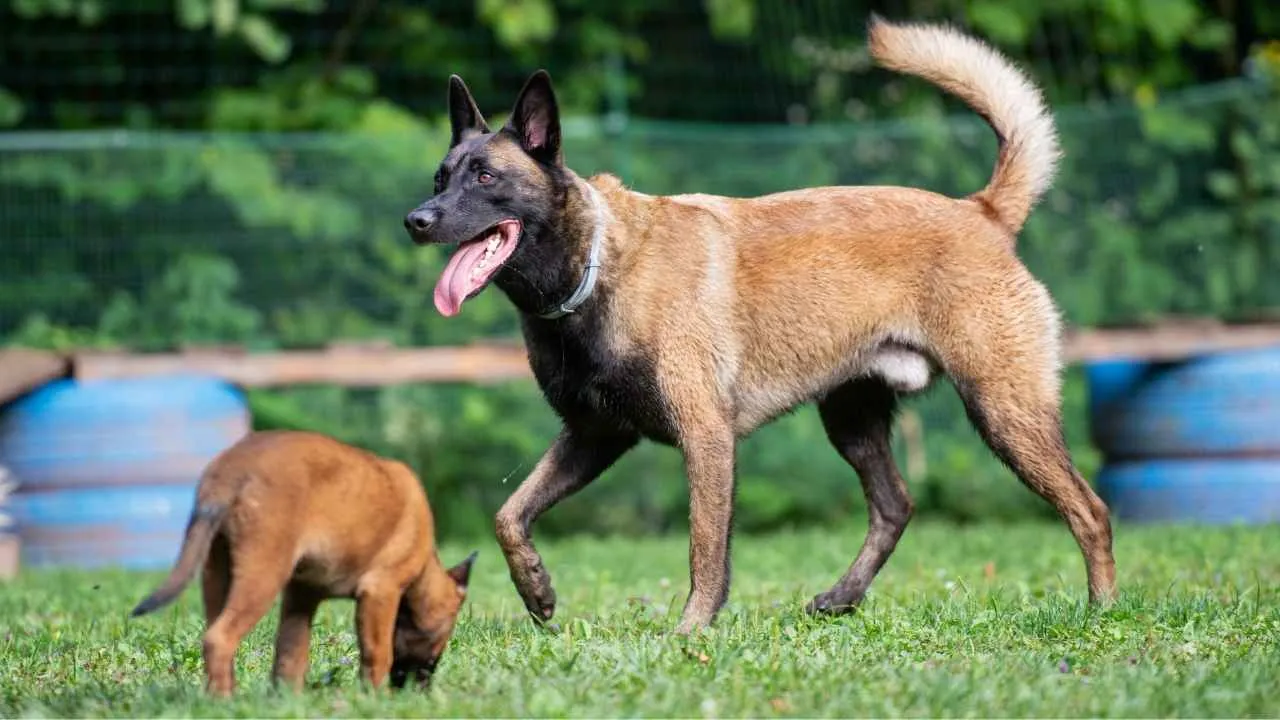
The Belgian Malinois is an active guard dog developed in Malines, Belgium, with great stamina and a natural instinct for work. Omlet states that they were bred for intelligence and agility, mainly used for guarding, herding sheep, and livestock.
By the 1950s, they were recognized for their exceptional skill as guard dogs and were increasingly developed for roles in police and military work.
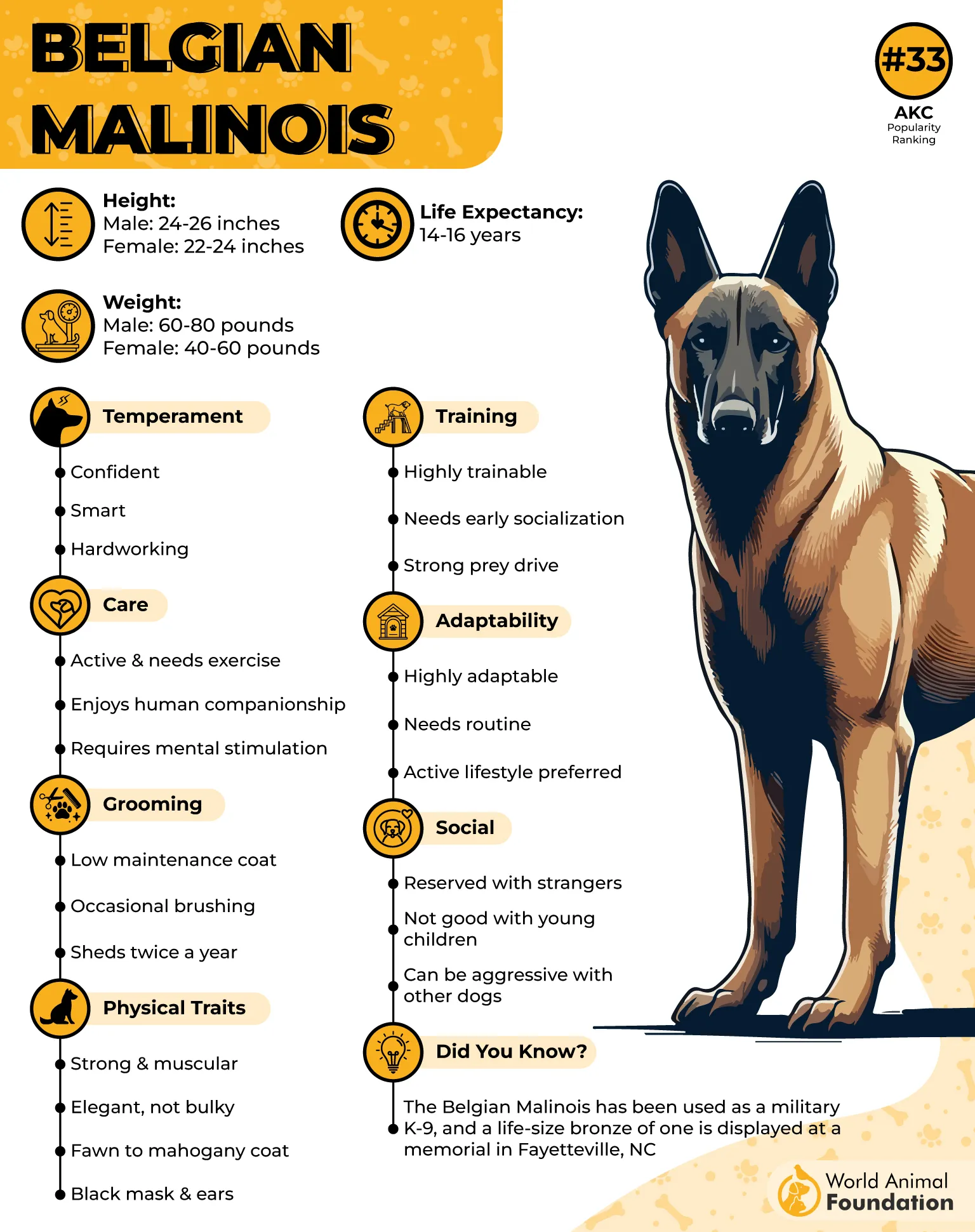
Their calm demeanor under pressure, combined with sharp focus, makes them dependable in both professional and home settings. With proper basic obedience training and plenty of exercise, they can adapt well to family life, offering loyalty and protection to those they know and trust.
Belgian Malinois require a committed, experienced owner who can meet their high energy needs and provide structure. When their working drive is channeled through training and meaningful activity, they thrive as both skilled protectors and devoted companions.
5. Doberman Pinscher
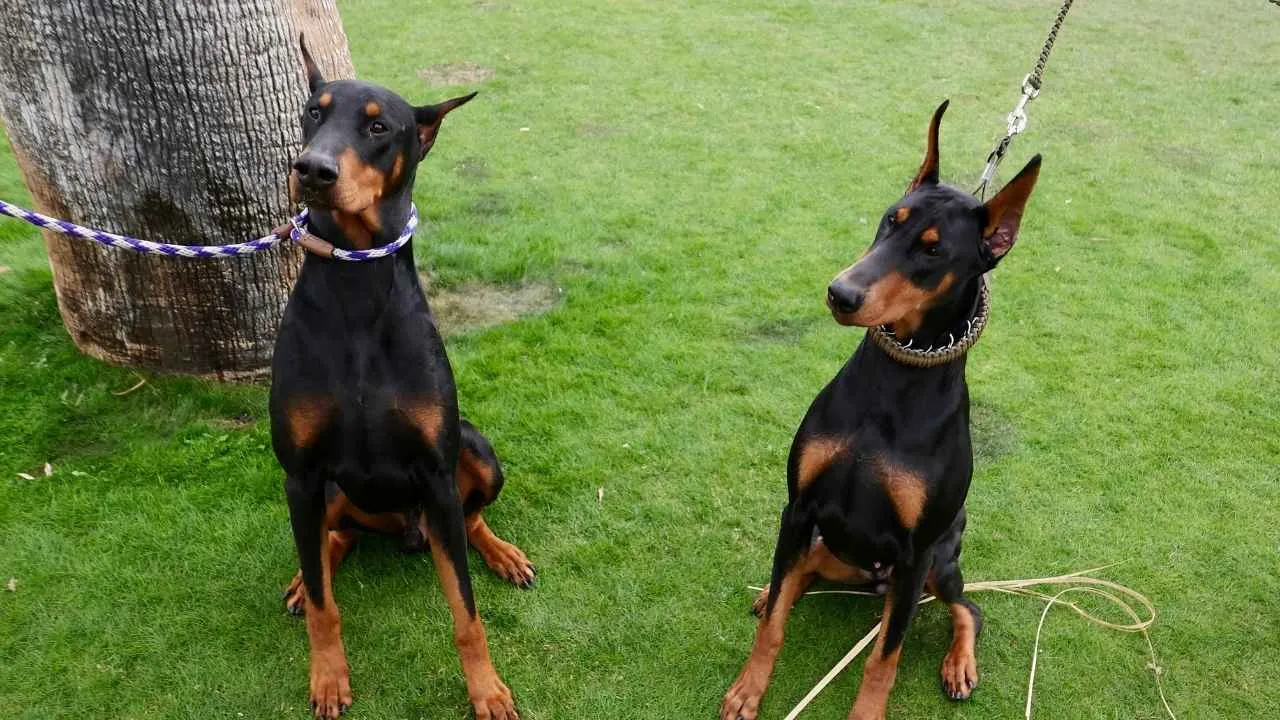
Dobermans are one of the most well-trained protection dogs, developed in Germany in the late 1800s by tax collector Karl Friedrich Louis Dobermann for personal protection.
Bred from several working breeds, they were created to be excellent guard dogs with strength, speed, and alertness. Males often focus on guarding property, while females are more inclined to protect their owner, making both valuable for different personal protection needs.
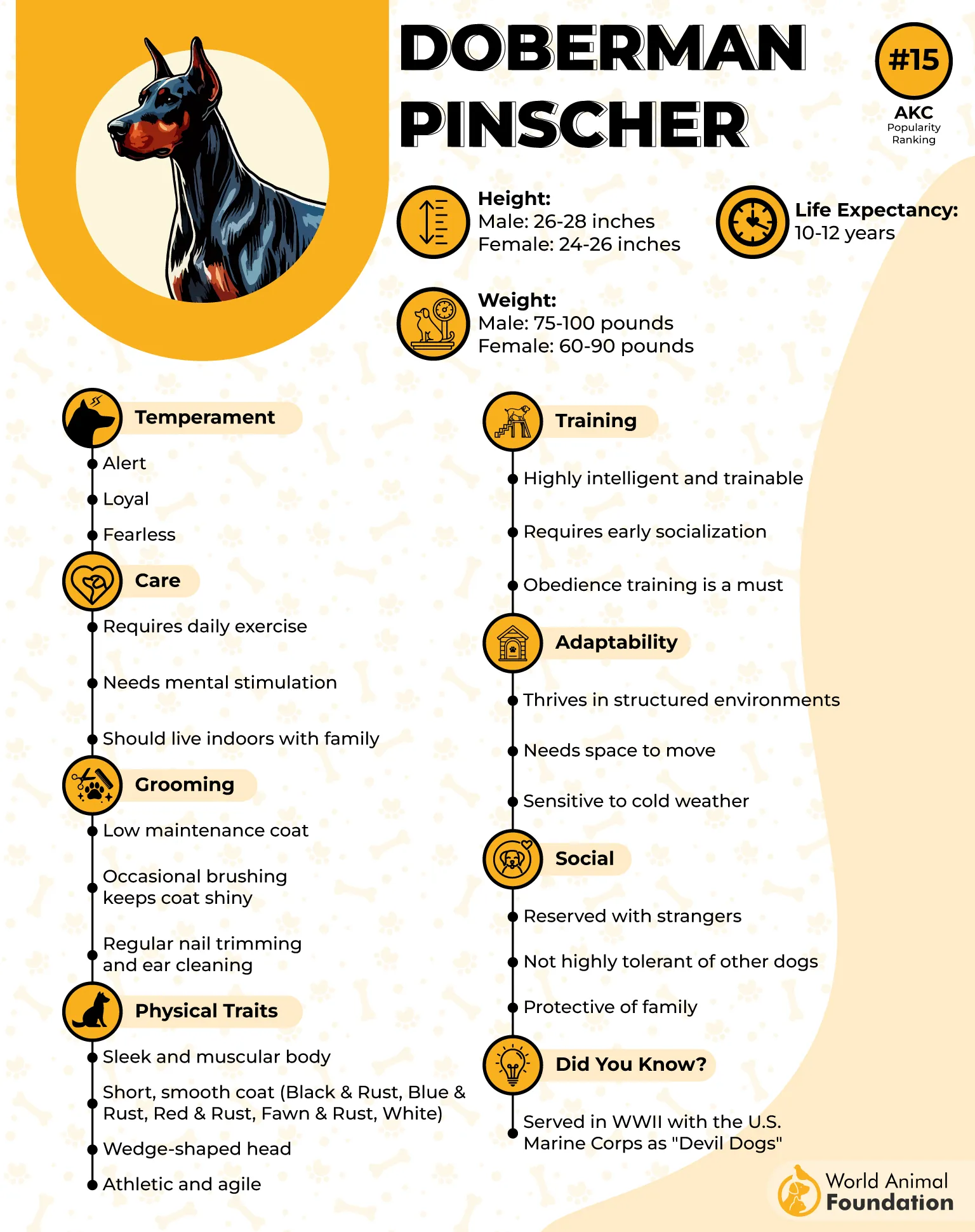
Known for being extremely intelligent, Dobermans learn quickly and adapt to many tasks, from security and police work to search and rescue. Their trainability, problem-solving skills, and ability to read human body language make them dependable and responsive. With a balanced temperament, they can remain calm when needed while still responding decisively to threats.
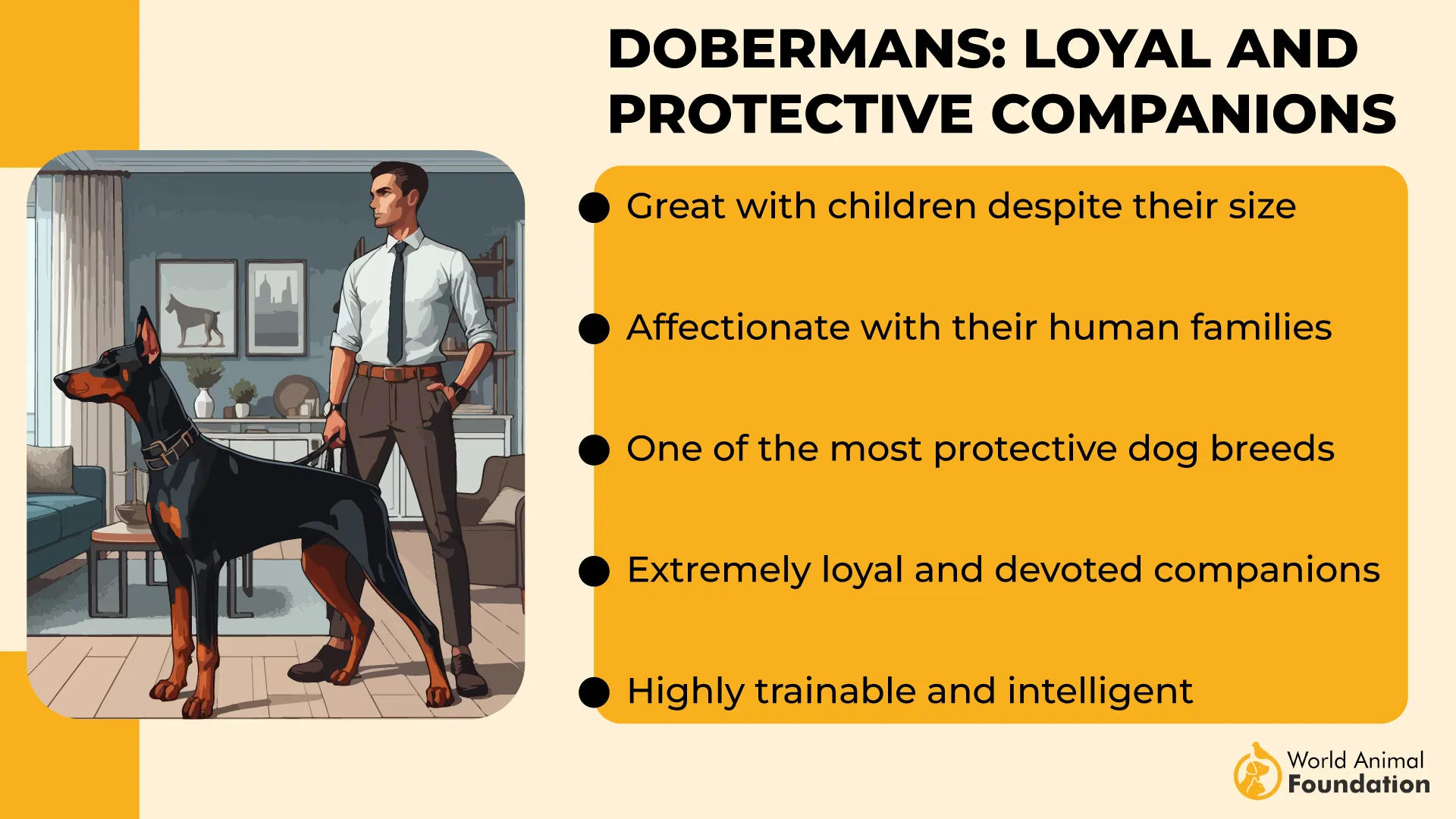
The breed is also fiercely loyal, forming strong bonds with its people. With proper training and socialization, the Doberman can be both a great family dog and a skilled protector, capable of offering safety without sacrificing companionship.
6. Rottweiler
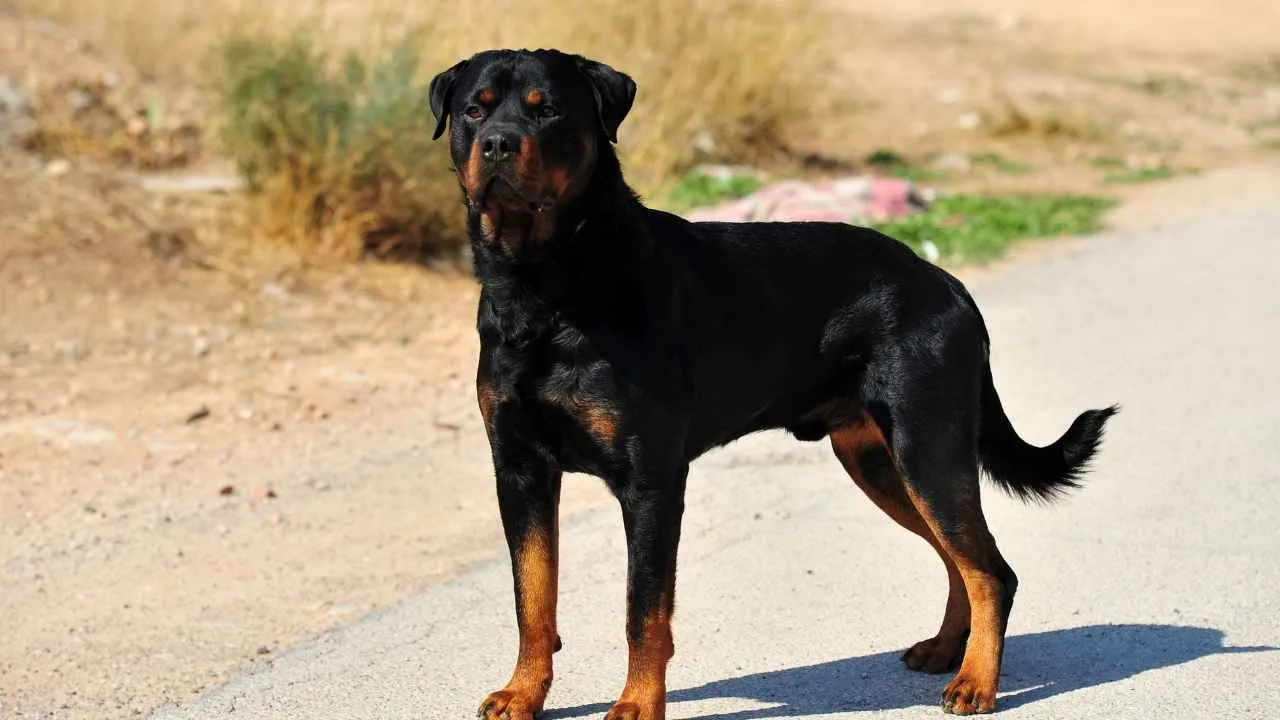
Rottweilers are natural guard dogs with a history that dates back to the Roman Empire, where they were used to guard livestock and protect their handlers.
AKC says that they became known as the “butcher’s dog,” a trusted companion that would guard a butcher’s money on trips to market—no thief would dare go near it. Their strength, confidence, and dependable protection skills have kept them valued for centuries.
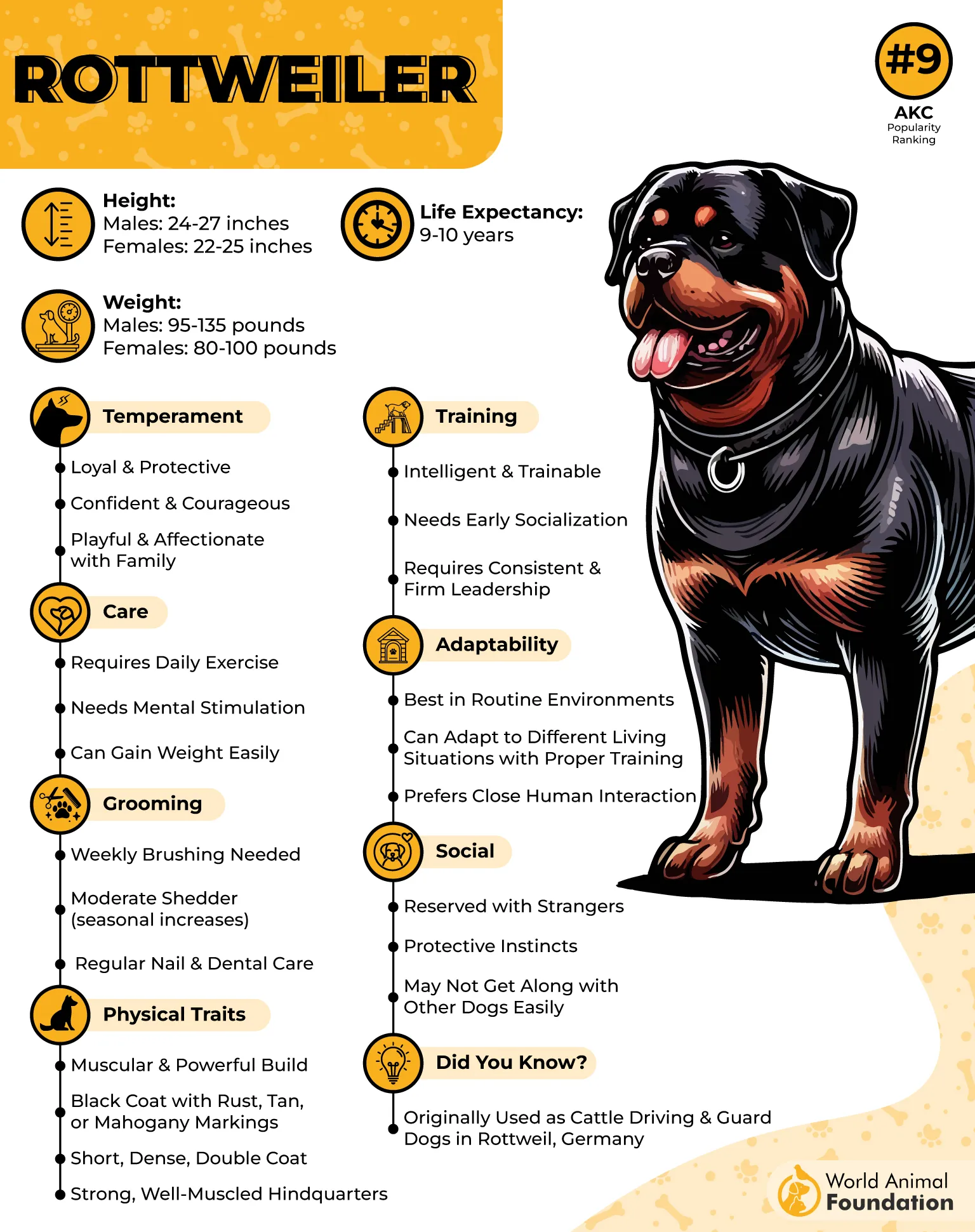
A loyal dog by nature, the Rottweiler bonds closely with its human family and will defend them instinctively. They have a long tradition of serving as protectors of both people and property, combining vigilance with courage.
Their short, primarily black dog coat not only gives them a distinguished look but can also appear intimidating to strangers. Athletic and intelligent, Rottweilers thrive in active homes where they can use their skills productively—whether that’s to guard livestock, watch over the home, or simply enjoy time with the family.
7. Boxer
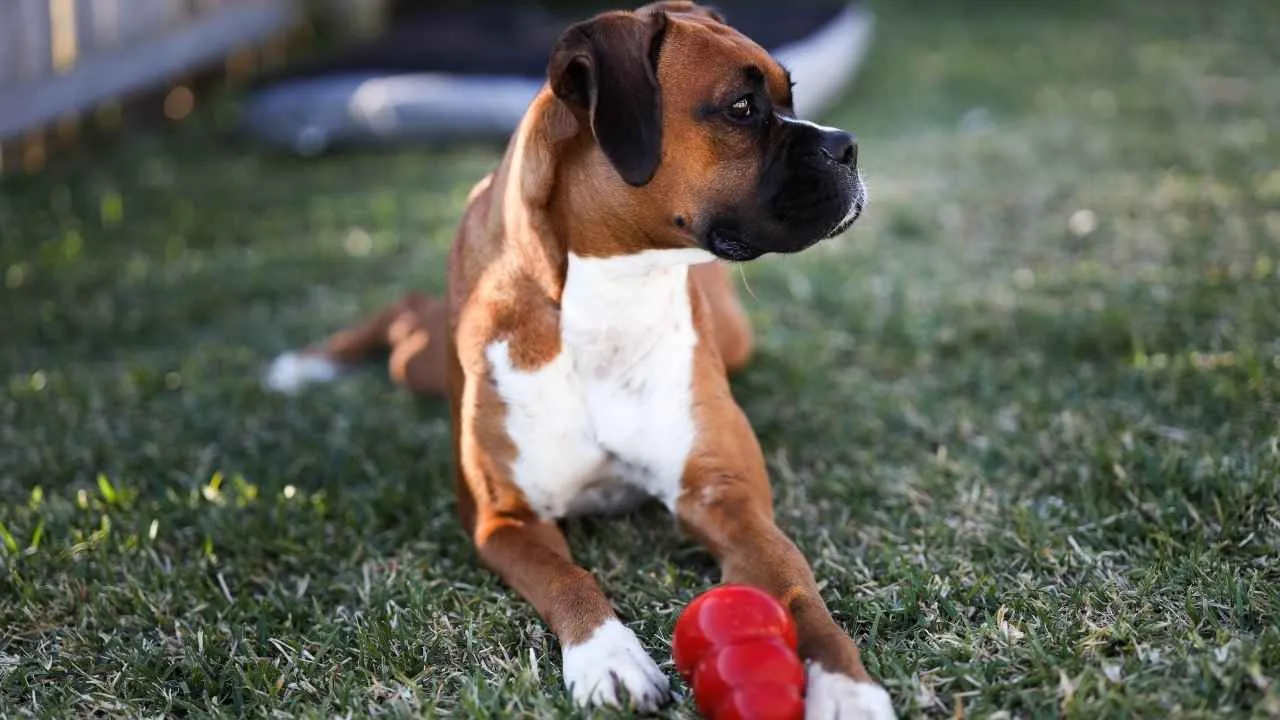
Boxers are loving dogs that build strong connections with their families, especially children, making them great family pets. Originating in Germany in the early 19th century, they were bred for guarding and protection work, giving them a natural edge as great guard dogs.
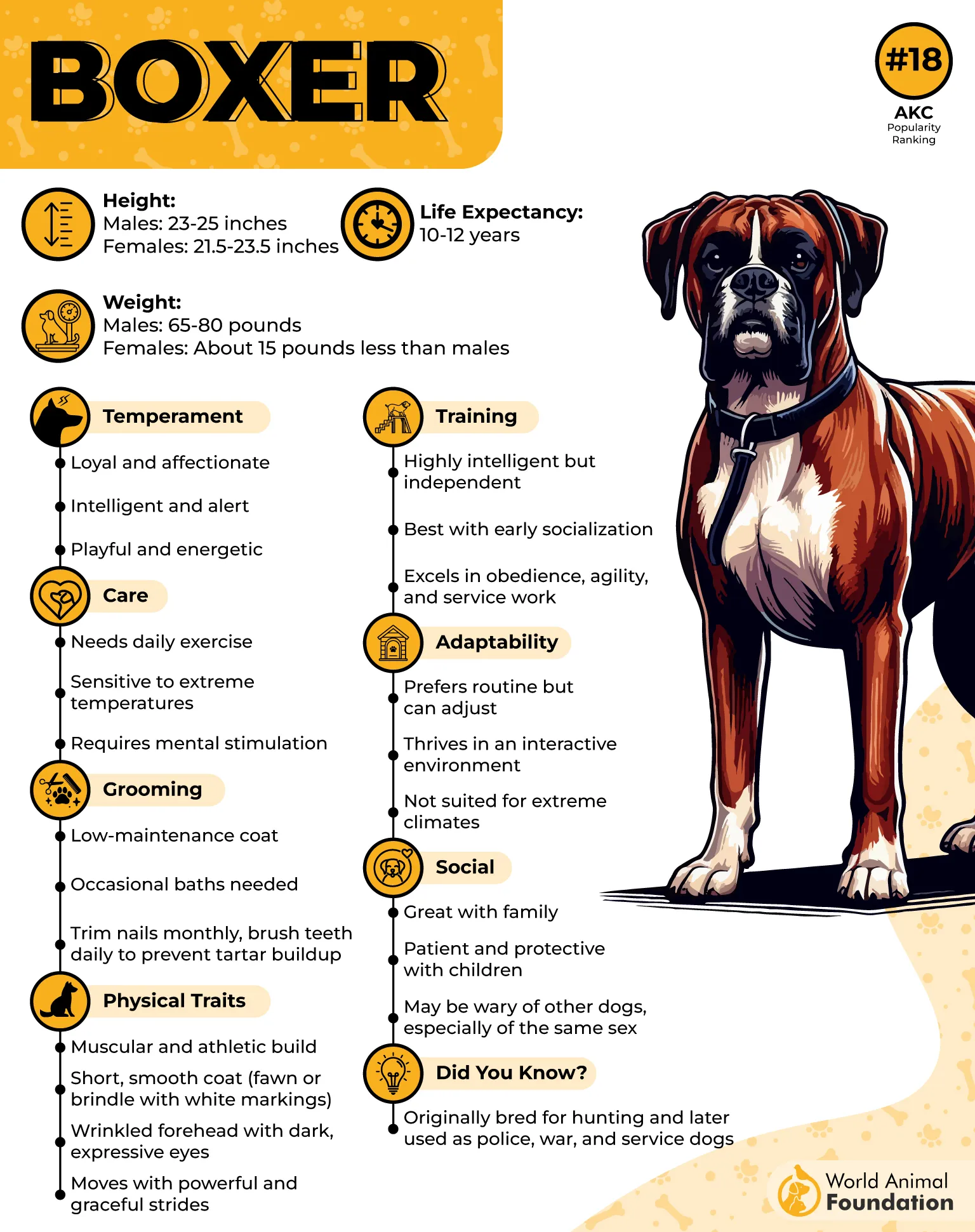
They are naturally suspicious of strangers and respond quickly to perceived threats. A loud bark enhances their deterrent abilities, often stopping intruders before a confrontation occurs. Training from an early age is key, as Boxers are intelligent and pick up habits—good or bad—very quickly.
In fact, canine expert Stanley Coren, along with the American Kennel Club, measured their working intelligence and obedience, finding that Boxers can learn a brand-new command in just 25 to 40 repetitions.
With steady guidance and, when needed, specialized training, Boxers excel in obedience and protection work. Their mix of loyalty, courage, and affection makes them both dependable guardians and great family pets.
8. Giant Schnauzer
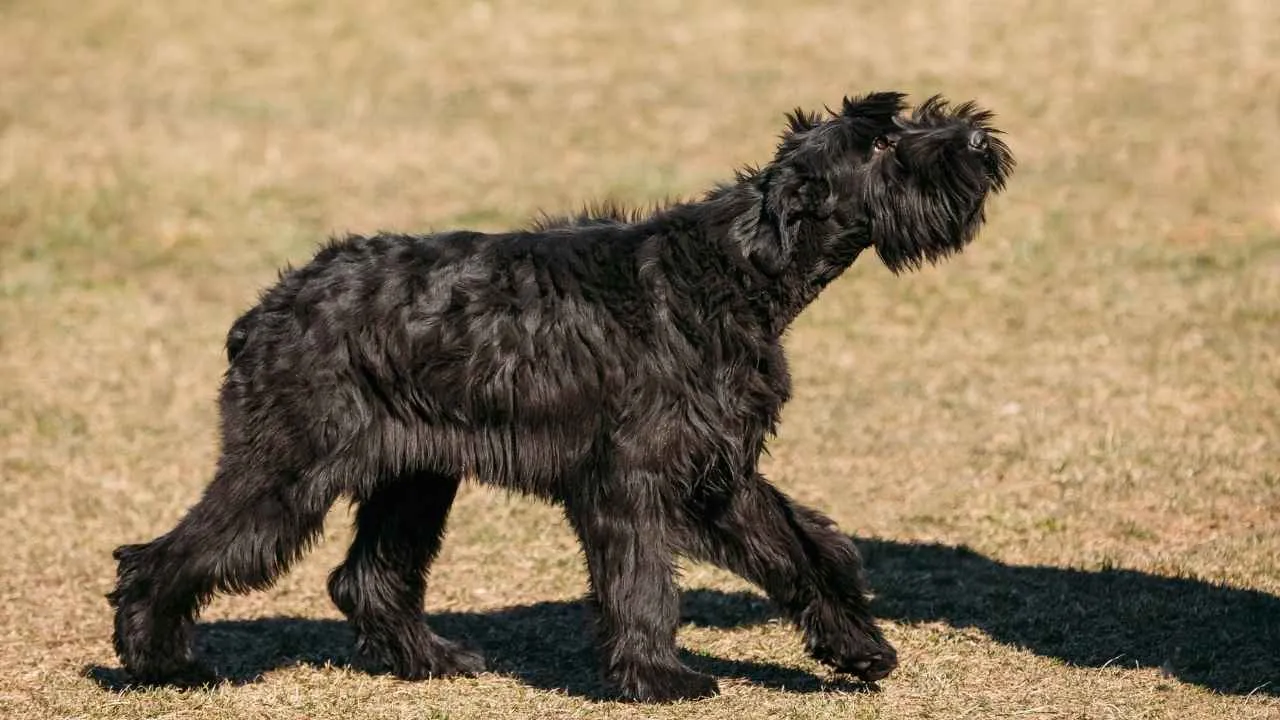
The Giant Schnauzer is a large dog with a strong working background and a reputation as one of the most dependable security dogs. Deeply loyal to their families and instinctively territorial, they are naturally wary of strangers and take their role as protectors seriously.
This breed is not the type to greet every visitor with a wagging tail—instead, they assess situations carefully before acting.
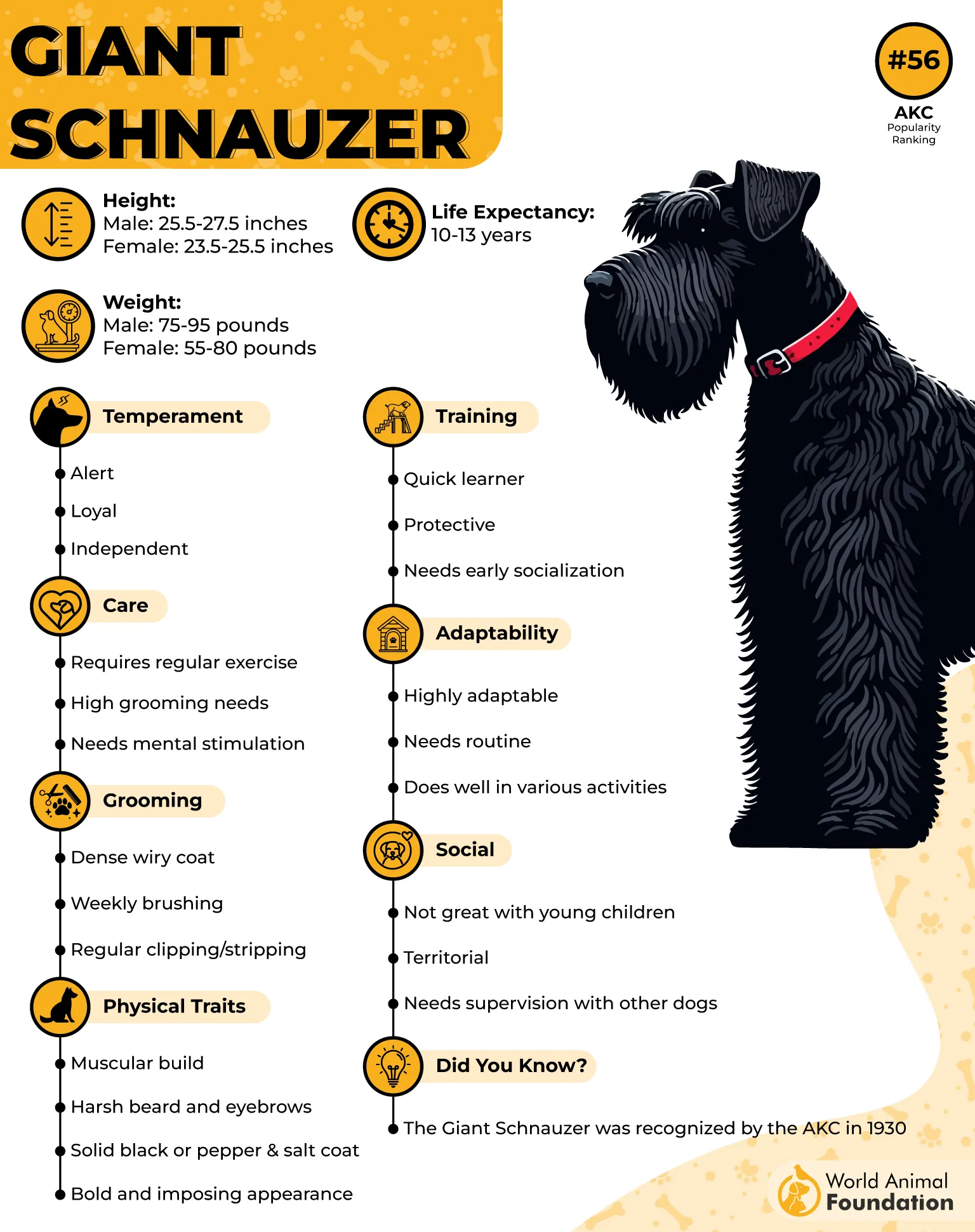
They are quick learners and highly intelligent, but require firm leadership, early socialization, and consistent training to manage their protective instincts. Vigorous daily exercise, such as hiking, jogging, or agility training, is essential to keep them physically fit and mentally balanced. Without enough activity and structure, they can become high-strung or difficult to handle.
With their size, strength, and natural guarding drive, Giant Schnauzers rank among the best protection dogs for experienced owners who can provide the time, discipline, and training they need to thrive.
9. Australian Cattle Dog
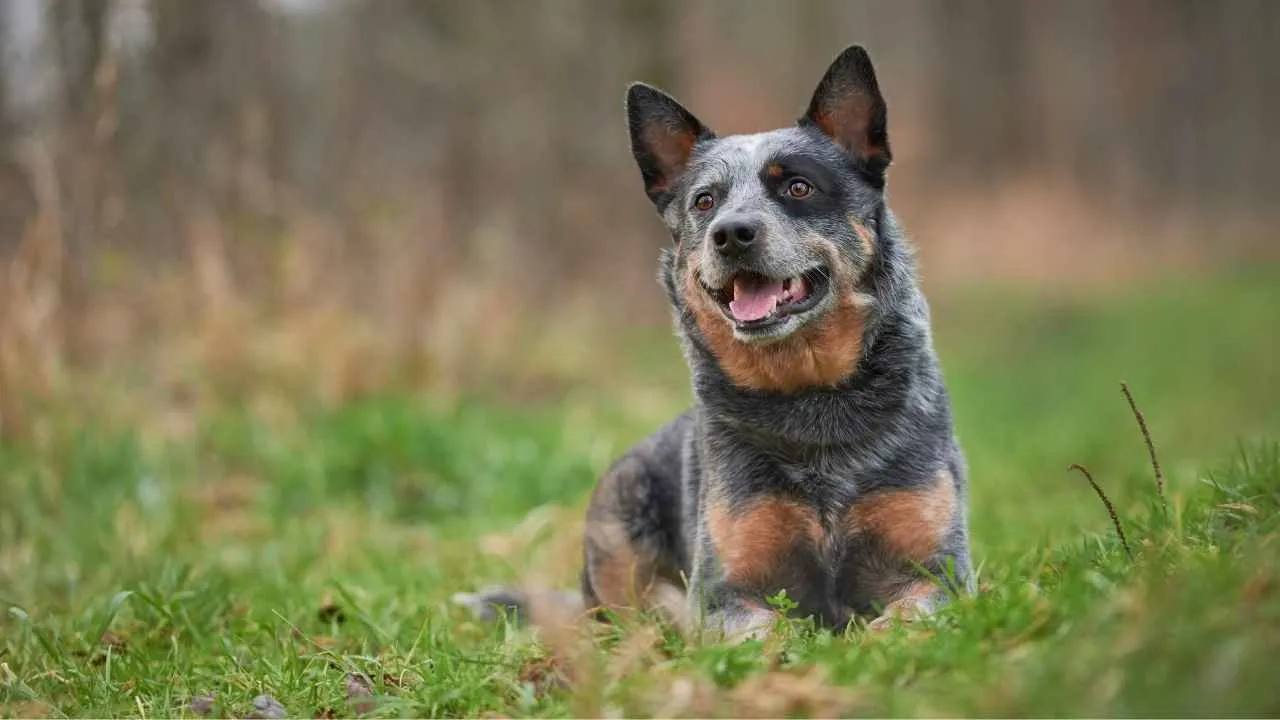
The Australian Cattle Dog is a loyal, courageous, and hard-working herding breed developed from the Dingo in Australia. Sometimes called the Blue Heeler, Red Heeler, or Queensland Heeler, this breed comes in two main coat colors—blue and red speckle.
As per PetMD, the “Heeler” name comes from their unique herding style, nipping at the heels of animals to drive them forward.
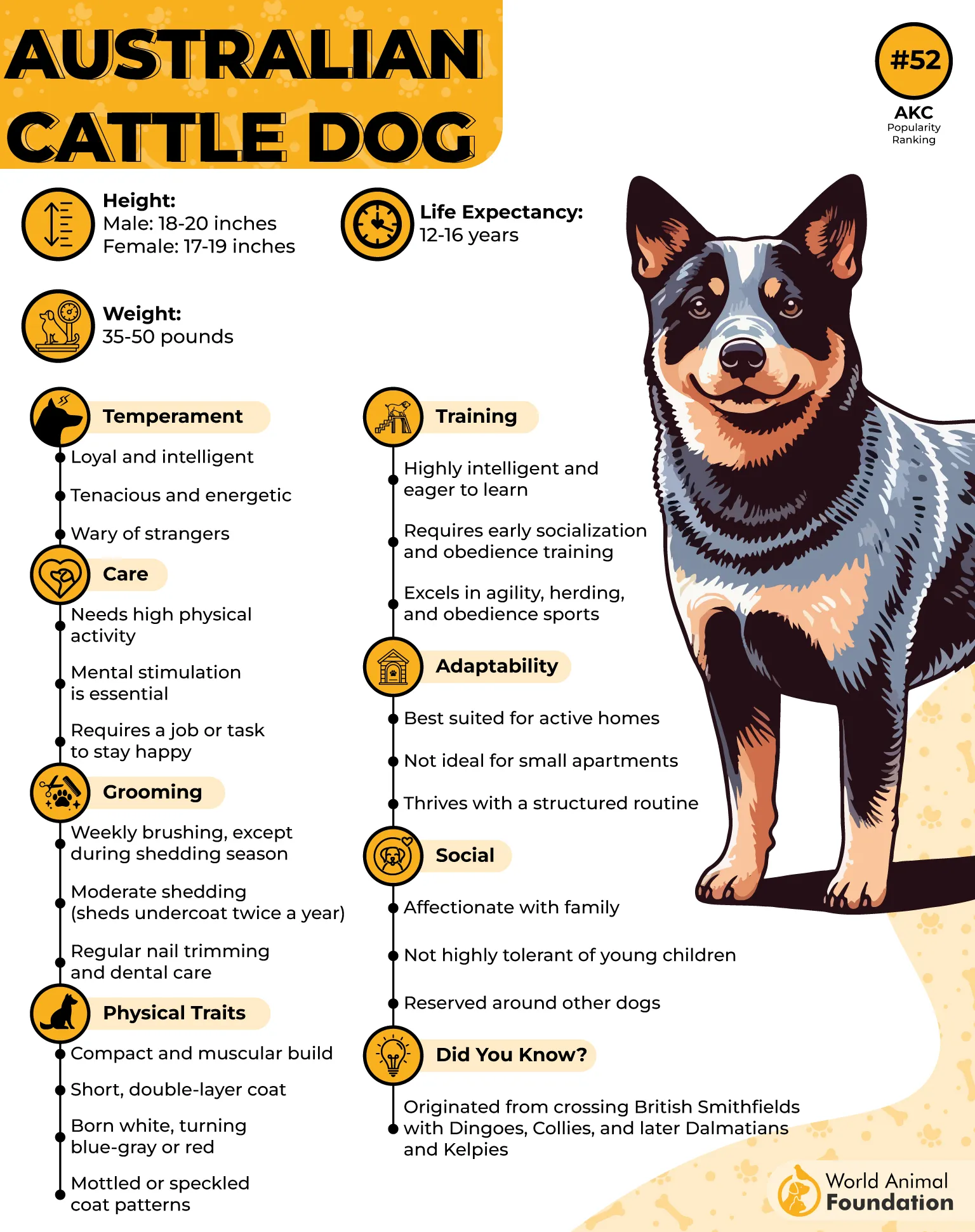
Known for exceptional intelligence, they excel in learning new skills but can be independent and stubborn. They thrive in activities such as agility, tracking, herding, and advanced training, which channel their strong desire to work.
Highly energetic, this breed is best suited for active households. Without enough mental and physical exercise, they can develop unwanted behaviors such as nipping and excessive barking.
They are naturally protective, patrolling their property and alerting their family when they sense danger, and may become aggressive if they perceive a real threat.
10. Shetland Sheepdog
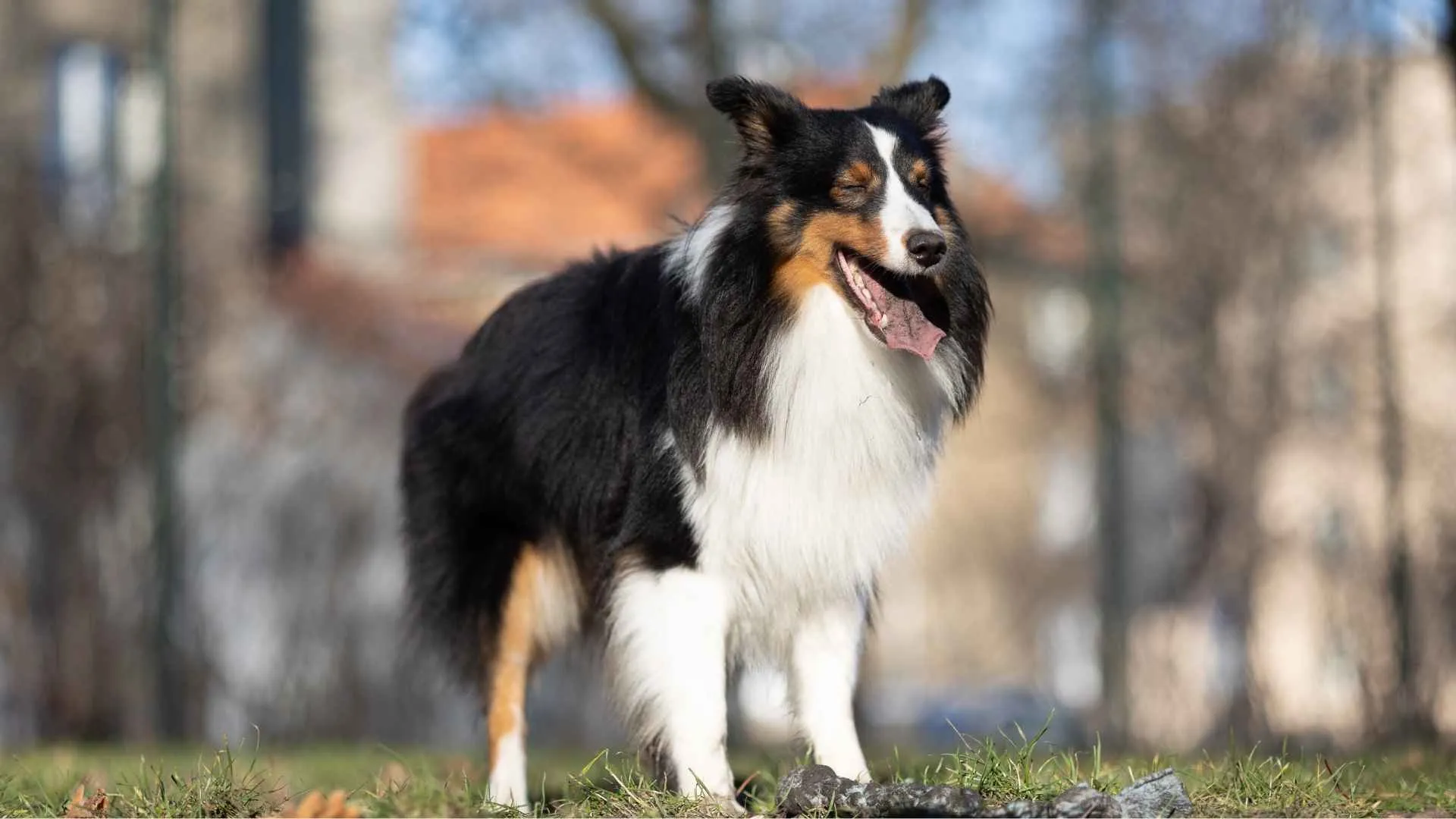
The Shetland Sheepdog is a small herding breed developed in Scotland’s Shetland Islands to manage small sheep, poultry, and ponies.
Often called Shelties, they resemble a smaller version of the rough-coated Collie, though they are a distinct breed with differences in ancestry, head shape, and coat type. They have a shorter head with a blunter muzzle and only come in a long-haired variety.
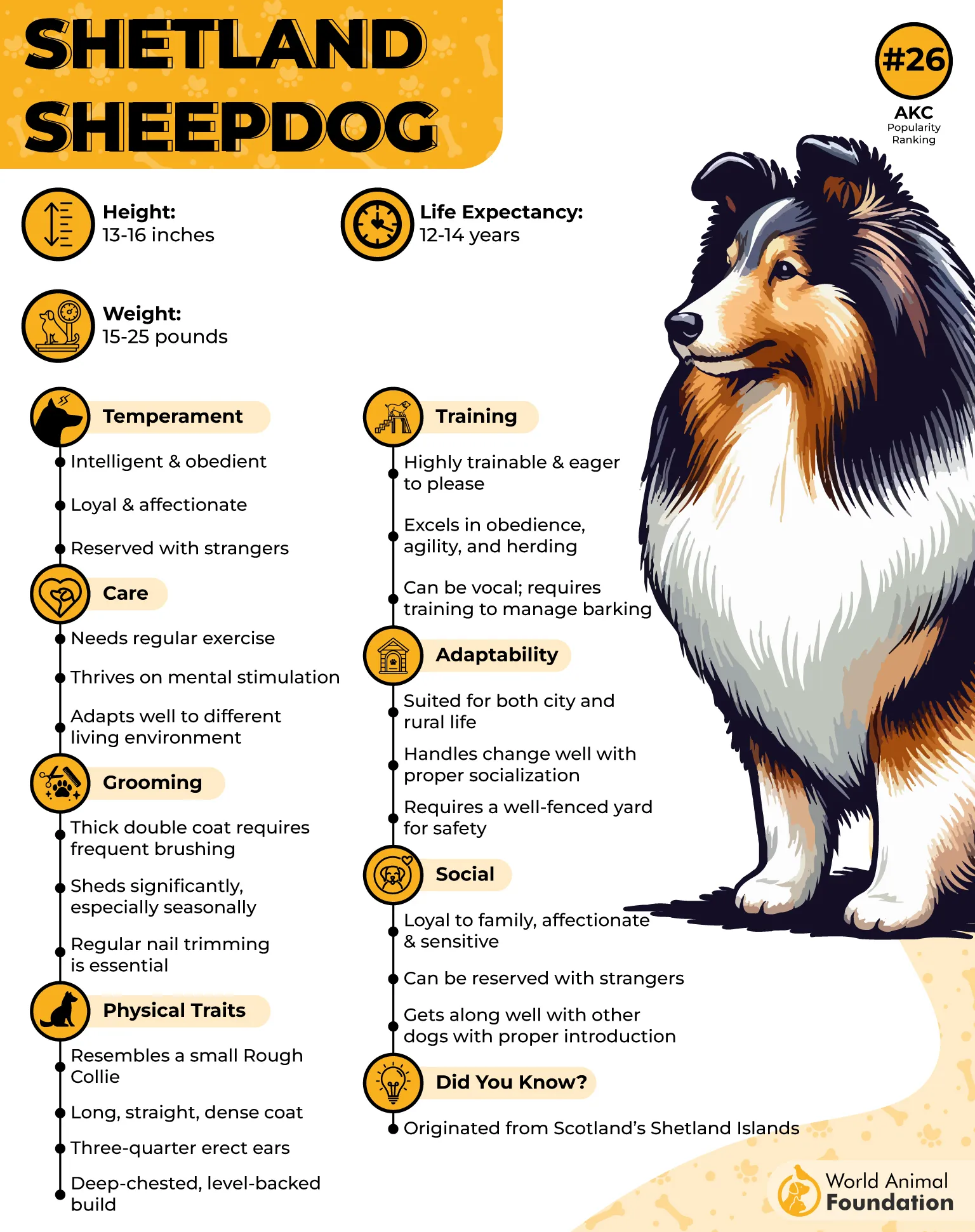
These dogs are known for their high intelligence, trainability, and quick learning abilities. They excel in herding, agility, obedience, and even therapy work. Originally bred for herding flocks, they remain fast runners and can be cautious around strangers while remaining affectionate and loyal to their families.
Shelties have a distinctive appearance with brown or black faces and bodies, white legs and paws, and a fluffy white collar of fur around the neck and shoulders. Their energetic and intelligent nature makes them well-suited for active homes where they can be mentally and physically engaged.
Conclusion
Choosing the right guard dog means finding a balance between loyalty, trainability, and protective instincts. The breeds we’ve covered each bring their own strengths—whether it’s sheer size and power, unmatched intelligence, or a calm, watchful presence. With the right training, early socialization, and a committed owner, these dogs can excel as both protectors and companions.
Apart from the ones mentioned above, there are other smart guard dog breeds as well. These include the Dutch Shepherd, Staffordshire Bull Terrier, Tibetan Mastiff, Rhodesian Ridgeback, Labrador Retriever, American Staffordshire Terrier, and Golden Retriever.
At the end of the day, the best guard dog for you is the one that fits your lifestyle and family dynamic. When cared for properly, these loyal guardians don’t just defend your home—they become trusted members of the family, offering love, companionship, and unwavering protection for years to come.


